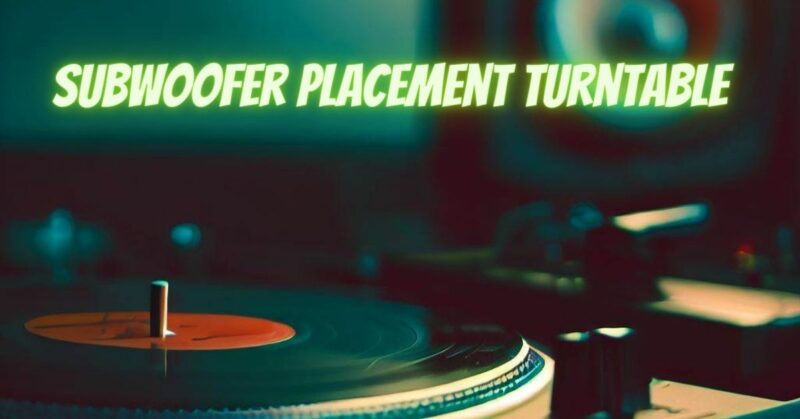In the realm of audio immersion, where basslines throb and melodies envelop the senses, subwoofers emerge as the architects of low-frequency magic. For vinyl enthusiasts, the synergy between subwoofers and turntables can elevate the analog experience to new dimensions. However, achieving the perfect balance requires an understanding of subwoofer placement in relation to your turntable setup. This article delves into the intricacies of subwoofer placement for turntables and how it influences your sonic journey.
The Dance of Low Frequencies
Subwoofers are designed to reproduce deep bass frequencies, enhancing the richness and depth of music. When integrated seamlessly with a turntable setup, they can add a tactile dimension to vinyl playback, making the listening experience more immersive and dynamic.
1. Finding the Right Spot
Placing your subwoofer in the ideal location is key to achieving balanced bass response without overpowering or muddying the sound. Consider these placement options:
- Corner Placement: One of the most common spots for subwoofers is in a corner of the room. This maximizes bass output and can be effective for room-shaking effects. However, corner placement can also lead to boomy and uneven bass, so adjustments may be necessary.
- Centered Along a Wall: Placing the subwoofer along a wall, ideally centered, can provide a good compromise between bass distribution and sound quality. This can help reduce bass buildup in corners.
- Opposite Wall Placement: Positioning the subwoofer on the wall opposite your turntable setup can help distribute bass more evenly throughout the room, minimizing bass peaks and nulls.
- Experimentation: Subwoofer placement can be influenced by the acoustics of your room. Experiment with different positions and listen for changes in bass response and overall sound quality.
2. Subwoofer-Turntable Relationship
Placing your subwoofer too close to your turntable can introduce unwanted vibrations and potential interference with the delicate stylus-groove interaction. Maintain a reasonable distance between the subwoofer and the turntable to avoid these issues.
3. Crossover Settings and Integration
Subwoofers often come with adjustable crossover settings. These settings determine the frequency range at which the subwoofer starts to play. Experiment with the crossover frequency to find a balance where the subwoofer seamlessly integrates with your main speakers and turntable setup.
4. Acoustic Treatment
Room acoustics play a crucial role in how bass frequencies are distributed. Consider acoustic treatments such as bass traps and diffusers to improve bass response and minimize unwanted resonances.
5. Bass Management
If your subwoofer and turntable are part of a larger audio system, your AV receiver or preamp may offer bass management options. These settings can help optimize bass distribution and prevent bass cancellation.
6. Listening Tests
Ultimately, your ears are the best judge. Listen to various types of music with different subwoofer placements and settings. Pay attention to bass clarity, depth, and overall sound balance.
Subwoofer placement is an art that involves careful consideration, experimentation, and a willingness to fine-tune until the sonic landscape is just right. When integrated thoughtfully with your turntable setup, a well-placed subwoofer can elevate your analog audio experience by adding depth, impact, and dimension to the music. As you delve into the intricate interplay of frequencies and vibrations, you embark on a journey to create a harmonious blend of analog authenticity and modern audio innovation.


